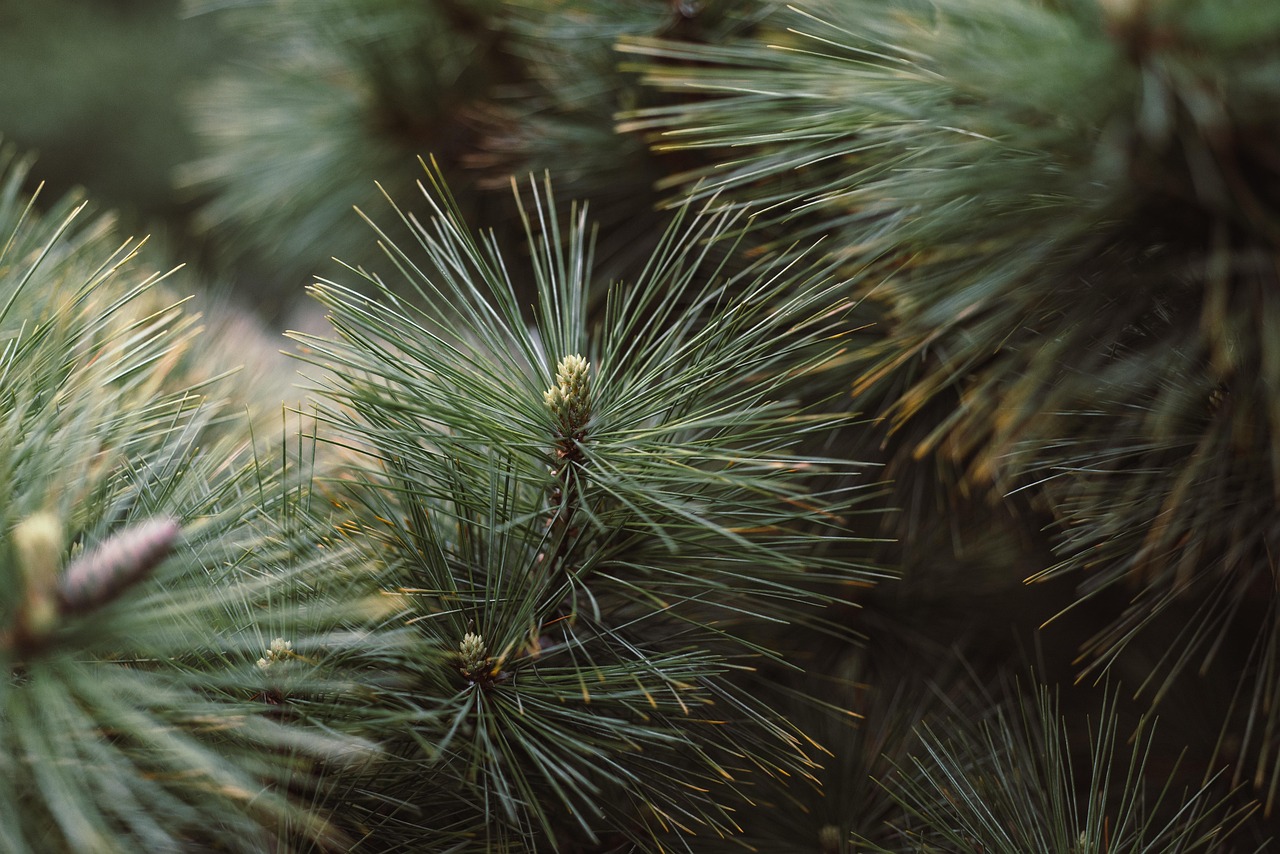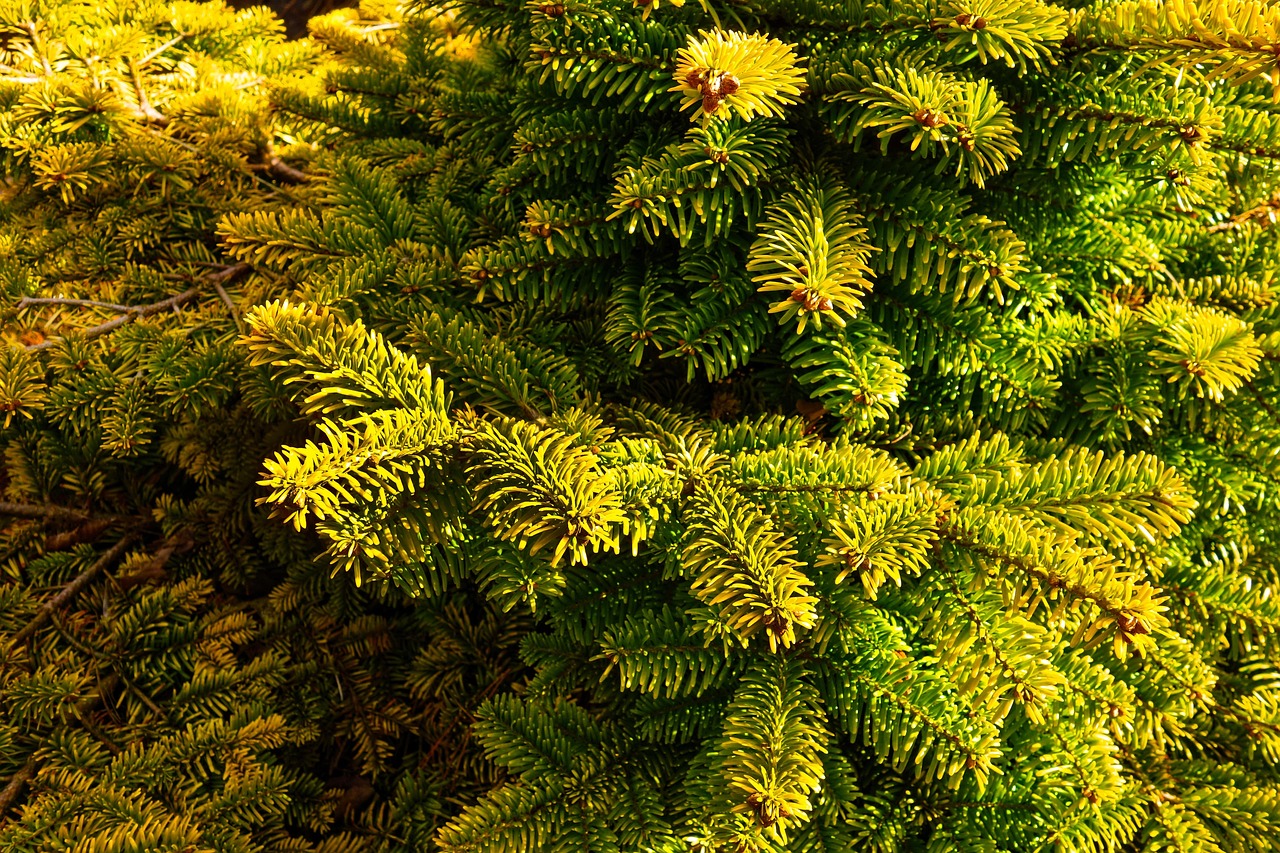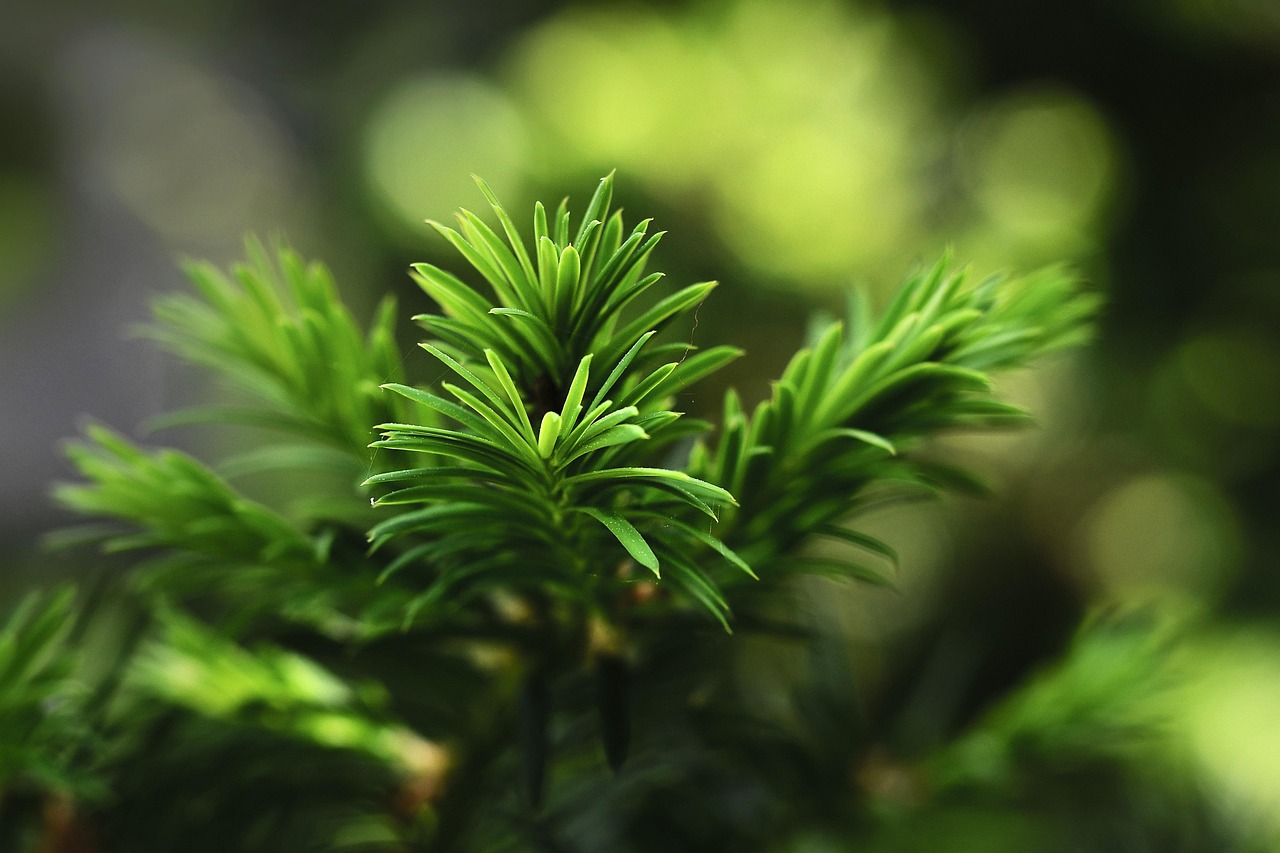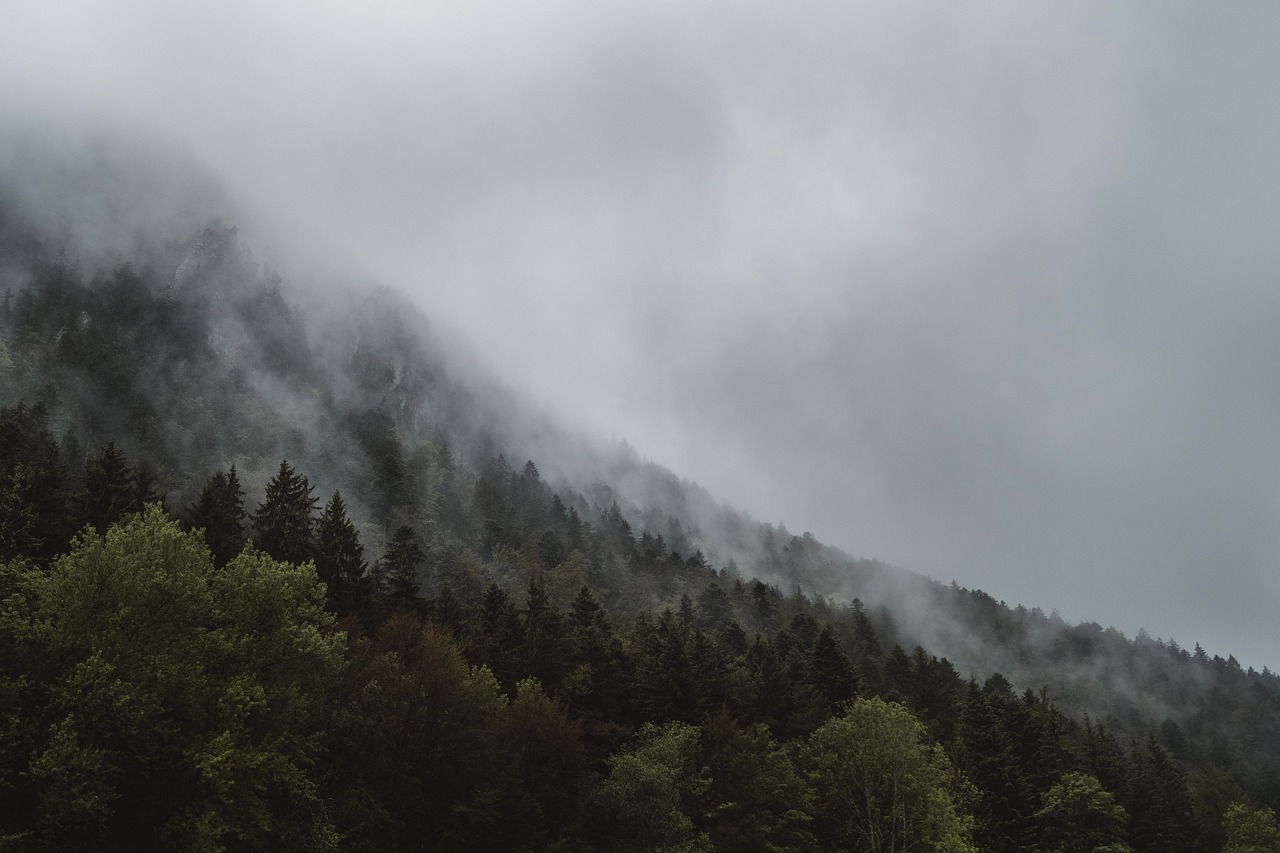Evergreen trees that thrive in shaded areas can transform dark corners of your garden into lush retreats. These trees provide year-round greenery, require minimal sunlight, and enhance the beauty of your landscape. Here’s a closer look at the types of evergreen trees that flourish in the shade.
Finding the right plants for shaded spots can be a challenge. Many people assume that only shade-tolerant shrubs or perennials can grow successfully in low-light areas. However, several evergreen trees also thrive under these conditions. They offer numerous benefits, including privacy, windbreaks, and habitat for wildlife.

Evergreen trees retain their foliage throughout the year, ensuring your garden remains vibrant, even during winter months. They can also help reduce soil erosion and improve air quality. Additionally, the dense foliage of these trees provides shelter for birds and other small animals, creating a lively ecosystem in your yard.
Characteristics of Shade-Loving Evergreen Trees
Before selecting the right evergreen trees for your shady areas, it is essential to understand their characteristics. Here are some key traits that make them suitable for low-light environments:
- Shade Tolerance: These trees can survive with limited sunlight. They often have adaptations that allow them to photosynthesize efficiently in lower light conditions.
- Growth Rate: Many shade-loving evergreens have slower growth rates compared to those in full sun. This can make them easier to manage in smaller spaces.
- Root Systems: Their root systems are generally shallow, allowing them to grow in various soil types and conditions.
- Foliage Texture: The leaves of these trees may be larger and thicker, helping them capture more sunlight in dim conditions.
When considering which evergreen trees to plant, it’s helpful to know some specific examples that thrive in shady environments. Below is a table of popular shade-loving evergreen trees:
| Tree Name | Height | Spread | USDA Hardiness Zone |
|---|---|---|---|
| Eastern Hemlock | 40-70 feet | 25-35 feet | 3-7 |
| Pine (Eastern White Pine) | 50-80 feet | 20-40 feet | 3-8 |
| Cedar (Northern White Cedar) | 40-60 feet | 15-25 feet | 2-7 |
| Yew (English Yew) | 10-20 feet | 10-15 feet | 4-7 |
This table highlights a selection of evergreen trees that not only tolerate shade but also add beauty and structure to your landscape. As you plan your shaded garden, consider factors such as soil type, moisture levels, and climate zones to ensure the best results.
Incorporating these evergreen trees into your landscape design can create a serene and inviting atmosphere. They can serve as focal points or background plants, depending on your vision. The right choice will depend on your specific shaded conditions and aesthetic preferences.
Benefits of Planting Evergreen Trees in Shady Areas
Choosing to plant evergreen trees in shaded spots offers numerous advantages. These trees not only enhance the visual appeal of your landscape, but they also contribute to ecological balance and provide practical benefits. Here are some noteworthy benefits:
- Year-Round Foliage: Unlike deciduous trees, evergreens maintain their leaves throughout the seasons. This ensures that your landscape remains vibrant, even during winter months when other plants are bare.
- Privacy and Shelter: Dense evergreen trees can act as natural privacy screens. They help block noise and create secluded spaces in your yard.
- Wildlife Habitat: Evergreens provide essential shelter for birds and small animals. Their foliage creates a safe environment for nesting and feeding.
- Windbreaks: In exposed areas, planting evergreen trees can serve as windbreaks. They reduce wind speed, protecting your home and garden from harsh weather conditions.
Ideal Conditions for Shade-Loving Evergreens
To thrive in shaded areas, evergreen trees require specific conditions. Understanding these requirements can help ensure successful growth. Here are some factors to consider:
- Soil Quality: Well-drained soil is crucial. Shade-loving evergreens often prefer slightly acidic to neutral soil. Test your soil to determine its pH level and nutrient content.
- Moisture Levels: These trees typically prefer consistent moisture but can adapt to varying levels. Ensure that the area does not remain waterlogged, as this can lead to root rot.
- Sunlight Exposure: While these trees tolerate low light, they still benefit from dappled sunlight. Avoid completely dark areas as they may struggle to thrive.
Choosing the Right Evergreen Trees for Your Space

Selecting the appropriate evergreen tree for your shady spot requires careful consideration of various factors. Here are some tips to guide your decision-making process:
- Consider Size: Determine the mature height and spread of the tree. Smaller species may be ideal for limited spaces, while larger trees can create a dramatic effect.
- Assess Growth Rate: Some evergreens grow quickly, while others are slower to mature. Choose based on how fast you want to see results.
- Evaluate Aesthetic Appeal: Think about the overall look you want to achieve. Different species offer varying textures, colors, and shapes.
- Check Hardiness Zones: Be sure the tree you choose is suitable for your local climate. Refer to the USDA hardiness zone map for guidance.
Caring for Shade-Loving Evergreens
<pOnce you have selected the right evergreen trees for your shady spots, proper care is essential for their health and longevity. Here are some care tips:
- Watering: During the first few years after planting, ensure that your trees receive adequate water, especially during dry spells. Aim for deep watering to encourage strong root development.
- Fertilizing: Apply a balanced fertilizer in early spring to promote healthy growth. Follow package instructions for application rates.
- Pruning: Regularly inspect your trees for any dead or damaged branches. Pruning helps maintain shape and encourages new growth.
Caring for shade-loving evergreens not only promotes their health but also enhances the overall beauty of your landscape. By understanding their needs and providing proper maintenance, you can create a thriving environment that adds value and charm to your yard.

Popular Evergreen Trees for Shade

Choosing the right evergreen trees for shaded areas is crucial for creating a lush, green environment. Here are some popular evergreen species that thrive in low light conditions:
1. Eastern Hemlock
The Eastern Hemlock is a beautiful evergreen that can reach heights of 40 to 70 feet. It features soft, dark green needles and has a graceful, pyramidal shape. This tree prefers moist, well-drained soil and can tolerate shade quite well, making it an excellent choice for woodland gardens.
2. Yew (English Yew)
The English Yew is a versatile evergreen that grows to heights of 10 to 20 feet. It is known for its dense, dark green foliage and can be pruned into various shapes. Yews are adaptable and can thrive in both sunny and shady spots, making them perfect for garden borders or hedges.
3. Northern White Cedar
Northern White Cedar, also known as Arborvitae, typically grows between 40 to 60 feet tall. Its scale-like foliage is bright green and can provide excellent privacy when planted in rows. This tree thrives in moist, well-drained soil and can tolerate partial shade.
4. Japanese Black Pine
The Japanese Black Pine is a unique evergreen that grows to about 40 feet. It has an irregular shape and distinctive bark, adding character to your landscape. While this tree prefers full sun, it can adapt to partial shade, making it suitable for a variety of locations.
Designing with Evergreen Trees in Shady Spots
Integrating evergreen trees into your landscape design can enhance the overall aesthetics of your garden. Here are some tips for effectively incorporating these trees into your shady areas:
- Create Layers: Use a combination of tall and short evergreens to create depth in your garden. Taller trees can serve as backdrops, while shorter varieties can fill in the foreground.
- Mix Textures: Combine different types of evergreen trees to add visual interest. For example, pair the fine needles of the Eastern Hemlock with the broad leaves of the Yew.
- Use as Focal Points: Plant a standout evergreen, such as a large Northern White Cedar, as a focal point in your garden. Surround it with lower-growing plants for contrast.
Creating a Natural Habitat
In addition to their aesthetic benefits, evergreen trees can create habitats for various wildlife species. To encourage biodiversity in your garden, consider the following:
- Provide Shelter: Dense foliage offers protection for birds and small mammals, creating a safe haven for wildlife.
- Plant Native Species: Incorporating native evergreens helps support local ecosystems and attracts native wildlife.
- Create Food Sources: Some evergreen trees produce cones or berries that provide food for birds and other animals.
Common Pests and Diseases
While evergreens are generally hardy, they can still be susceptible to certain pests and diseases. Awareness of potential issues can help you maintain healthy trees:
- Aphids: These small insects can infest new growth on trees. Regularly check your trees and use insecticidal soap if necessary.
- Scale Insects: Scale can attach to the bark and leaves, causing yellowing or dropping foliage. Keep an eye out for sticky substances or yellowing leaves.
- Needle Blight: This fungal disease can cause needles to turn brown and drop prematurely. Adequate air circulation and proper watering can help prevent this issue.
By being proactive about care and maintenance, you can keep your shade-loving evergreens healthy and thriving in your garden. Understanding their needs and potential challenges will ensure that these beautiful trees continue to enhance your landscape for years to come.
Maintaining Healthy Evergreen Trees in Shady Areas
To ensure the longevity and health of your evergreen trees in shaded areas, it’s vital to monitor their condition regularly. Keeping track of their growth and any environmental changes can help you catch potential issues early. Here are additional tips for maintaining these trees:
- Mulching: Applying mulch around the base of your evergreen trees can help retain moisture, suppress weeds, and regulate soil temperature. Use organic materials such as wood chips or bark to enhance the soil as they decompose.
- Proper Spacing: When planting multiple evergreens, ensure they are spaced appropriately. This allows for air circulation and reduces competition for light and nutrients.
- Pest Monitoring: Regularly inspect your trees for signs of pests or diseases. Early detection is crucial for effective treatment and management.
- Seasonal Care: Adjust your care routine based on the seasons. In winter, protect young trees from heavy snow loads and ice, while in summer, ensure they receive adequate water during dry spells.
Choosing Companion Plants
Incorporating companion plants around your evergreen trees can enhance the beauty of your garden while providing additional benefits. Here are some suitable companion plants that thrive in shade and can complement your evergreens:
- Hostas: Known for their lush foliage, hostas thrive in shaded areas and can add vibrant color and texture to the ground beneath your evergreens.
- Ferns: Many fern varieties enjoy shade and can create a natural woodland feel when planted alongside evergreens.
- Shade-Tolerant Ground Covers: Consider planting ground covers like creeping thyme or periwinkle to fill empty spaces while preventing weeds.
Final Thoughts
Evergreen trees that thrive in shade offer a multitude of benefits for any garden. They provide year-round greenery, enhance landscape aesthetics, and contribute to a healthy ecosystem by supporting wildlife. By carefully selecting appropriate species and providing the necessary care, you can transform those shady spots into vibrant areas of your garden.
The key is to understand the specific needs of each tree species you choose. Pay attention to their growth patterns, soil requirements, and light preferences. Additionally, fostering a diverse plant community around your evergreens can enhance both beauty and biodiversity in your garden.
With proper planning and maintenance, your shade-loving evergreens will flourish, creating a serene and inviting environment. Embrace the beauty and sustainability of these trees, and enjoy the tranquil atmosphere they bring to your outdoor space.
Remember, whether you are looking to create a private retreat or attract local wildlife, selecting the right evergreen trees for shade will undoubtedly enrich your landscape. Nurturing these trees will ensure they thrive for generations to come, making your shady spots truly special.
